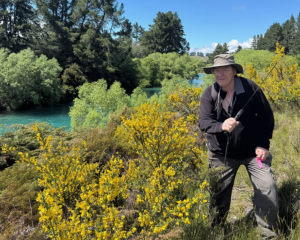
The call by Victoria University's Dr Matt Hall came days after Forest & Bird shut all of its reserves that have kauri trees and urged the Government to do the same.
The Department of Conservation was eyeing dozens of new track closures across at-risk areas, but insisted blocking access to all kauri forests was not needed.
Dr Hall nonetheless argued a full-scale ban was required to prevent people spreading kauri dieback disease until alternative, tried-and-tested strategies were in place.
Auckland Council has already closed much of the Waitakere Ranges and high-risk tracks in the Hunua Ranges to combat the soil-borne scourge, which has infected kauri throughout Auckland, the Coromandel and Northland's Waipoua Forest.
"I do not make the call lightly, and acknowledge that, as with the Waitakere closures, this could have significant economic impacts on people," Dr Hall said.
Doc, which this year classified kauri as "threatened" for the first time, had surveyed the entire 735km network of its managed tracks in kauri forests.
More than 50 high-priority tracks had been upgraded, and to date Doc had closed 13 tracks and four reserves.
Thirty-four more tracks had been proposed for full or partial closure, with a decision at the end of next month.
Dr Hall said while that move was positive, the process was still taking too long and didn't go far enough to cover all forests.
"If the health and continued existence of kauri forests is the primary concern, the closures need to be extended to include all forests."
He was particularly concerned for our most famous kauri, Tane Mahuta.
"Tane Mahuta and other majestic kauri in the forest draw hundreds of thousands of visitors, mainly international visitors, to the Waipoua forest. The sheer number of people visiting the site poses a real risk of contamination, through visitors straying off paths, or not cleaning boots."











